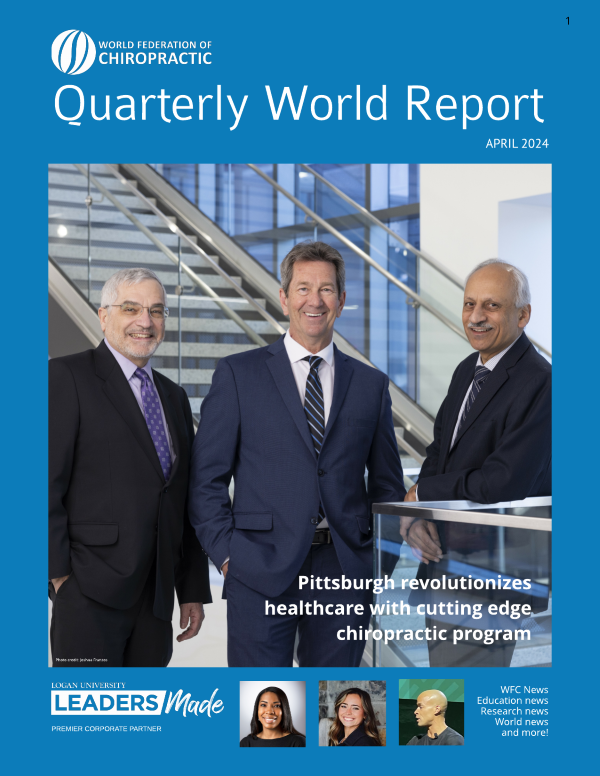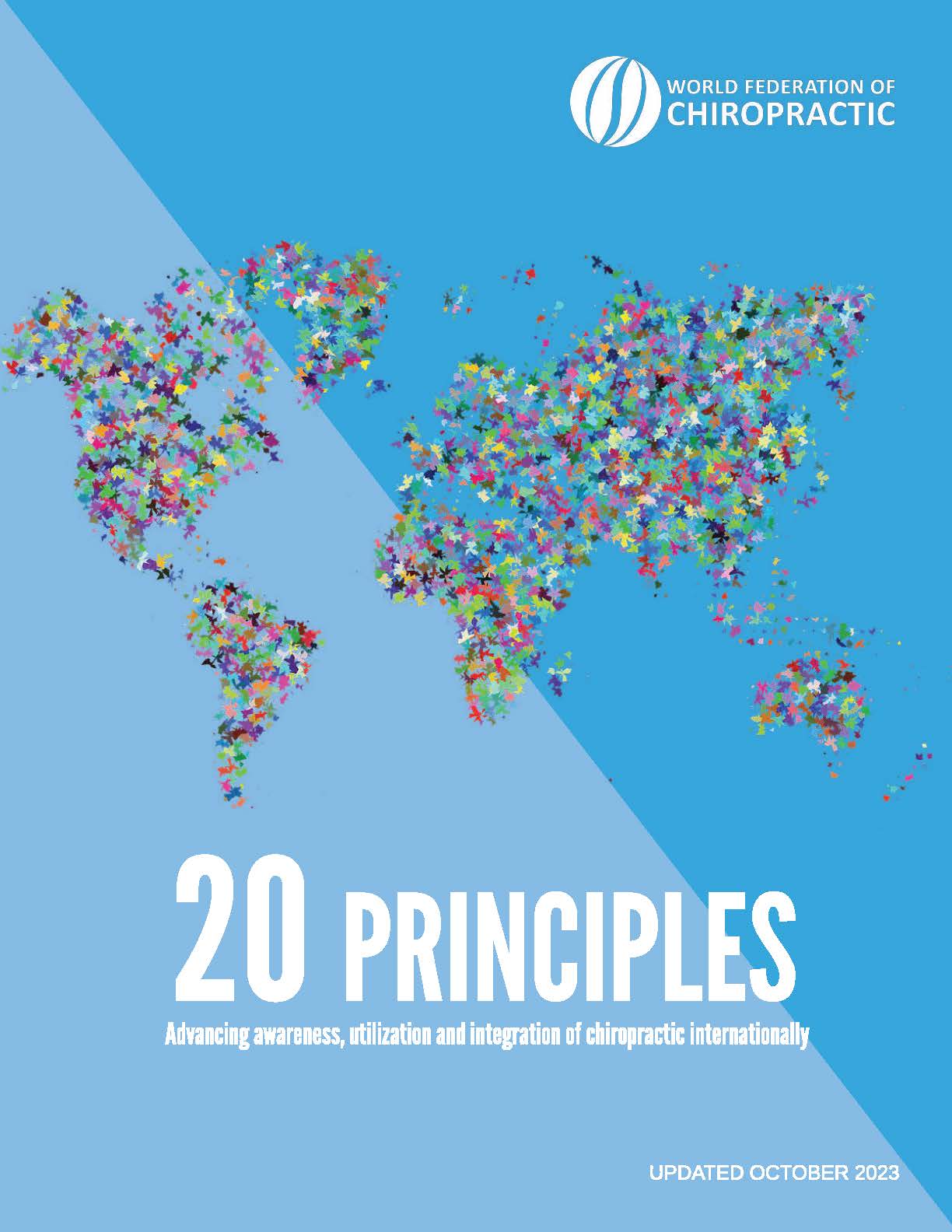 Evidence for spinal manipulation? Things are beginning to click. May 5, 2017
Evidence for spinal manipulation? Things are beginning to click. May 5, 2017
Evidence for spinal manipulation? Things are beginning to click. May 5, 2017
May 5, 2017

By World Federation of Chiropractic
Richard Deyo is a bit of a big cheese in the back pain world. A medical practitioner, he’s a Professor of Evidence-Based Medicine in the Department of Family Medicine at Oregon Health and Sciences University. He’s the Deputy Editor of Spine. He’s also on the editorial board of the Back Review Group of the Cochrane Collaboration. So it’s fair to say that so far as back pain goes, when he speaks, we should listen.
In the April 11 issue of the Journal of the American Medical Association (JAMA), Deyo’s editorial (1) focuses on the role of spinal manipulation in the treatment of back pain. Like this week’s article by Dr Aaron Carroll published in the New York Times (For Back Backs It May Be Time To Rethink Prejudices About Chiropractors, May 1, 2017), Deyo stresses the need to balance popular criticism often leveled at those using spinal manipulation with a few home truths when it comes to so-called conventional approaches to acute and chronic back pain.
Deyo hints that although spinal manipulation’s profile is rising as an evidence-based treatment intervention, its link to chiropractic has stunted its growth. Why? Because, he says, outdated views about health promoted by some chiropractors, rejecting immunization and other scientific advances, have led to suspicion and a reluctance of medical doctors to refer to them.
Despite this, Deyo reflects on the popularity of chiropractic in the US, citing one study involving 4000 respondents that showed chiropractic had more ‘highly satisfied’ consumers than physical therapy and primary care physicians. While reflecting on a recent systematic review that showed spinal manipulation to lead to modest improvements in pain and dysfunction, Deyo highlights the challenges of finding studies comparable in subjects, study design and interventions; thus, he say, it’s difficult to really be certain about the real magnitude of benefit.
Deyo concedes that there remains much we don’t know about the precise mechanisms of back pain, or how spinal manipulation actually works. Importantly, however, he says that this is no reason not to use it as a first-line intervention. Addressing the “but it’ll get better on its own” brigade, Deyo is quick to point out, as do many chiropractors, that the body has a tremendous ability to heal itself, but stresses that this is no reason not to manage pain associated with back pain using spinal manipulation.
Deyo refers widely in his editorial to a new systematic review and meta-analysis published by Neil Paige and his colleagues in the same April 11 issue of JAMA (2). The multidisciplinary authorship of this paper, including chiropractors Paul Dougherty and Richard Branson, sets out the benefits of spinal manipulation as well as transient harms. As Deyo points out, not a single study examined in the systematic review suggested that spinal manipulation was less effective than conventional care.
Key to Deyo’s editorial is the admission that we don’t have all of the answers when it comes to back pain. What’s the precise cause? Why some people do better than others? How do we best predict responses? How exactly does manipulation work?
When it comes to the popularity of chiropractic, contextual factors are often cited in explaining successful outcomes, and Deyo touches on these in his editorial. The hands-on nature of care. The ongoing doctor-patient relationship, with continuity of care over successive visits. The expectation of positive change, often with practitioner encouragement, reassurance, and positivity. Patients who feel empowered by their experience. As Deyo suggests, is it really so important that we don’t quite know the precise mechanisms of action when care is considered in the round and patients are so satisfied with their treatment?
Deyo goes on to address those who claim that spinal manipulation is dangerous. Besides pointing out that none of the RCTs or large observational studies reviewed by Paige et al identified any serious complications, he highlights the prevalence of renal and gastrointestinal adverse events from non-steroidal anti-inflammatory drugs and the risk of addition to opioids, both of which, he says, should be factored into cost comparisons when studying the relative effectiveness of spinal manipulation and conventional pharmacological approaches.
In conclusion, Deyo cautions against chiropractors who make exaggerated claims over the likely benefits of their care, especially in relation to non-musculoskeletal diseases, but stresses that spinal manipulation is a legitimate treatment option for low back pain, which the evidence shows is at least as effective as conventional drug approaches. In an era of evidence-based care, he observes that this is one area where the informed views and preferences of patients should count as much as the preferences of clinicians.
What Richard Deyo’s excellent editorial makes clear is that with a growing body of evidence suggesting comparative effectiveness, cost-effectiveness and safety of spinal manipulation, chiropractors are faced with opportunities like never before to position themselves as spinal health care experts in the healthcare system. At the same time, issues that perpetuate suspicion and mistrust must be tackled forcefully. Our future is, quite literally, in our hands.
References:
Deyo R. The role of spinal manipulation in the treatment of low back pain. JAMA (2017) April 11; 317(14):1418-1419.
Paige NM, Miake-Lye IM, Booth MS, et. al. Association of spinal manipulative therapy with clinical benefit and harm for acute low back pain. JAMA (2017) April 11; 317(14):1451-1460
Featured Videos
Rechercher
Click here to see complete Corporate Partners List











